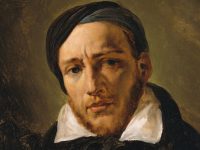
 © Joy Division Unknown Pleasures‘s famous cover, one of the most important albums of the 20th century. |
||
|
The historian and music critic Simon Reynolds talks about the birth of post-punk —in his book on the topic— as an arty response to the disintegration of the punk movement, which had become a parody of itself. While «real punks» remained true to a style highly influenced by a populist leftist discourse and a non-pretentious accessible music from 1977 on, middle class groups emerged in Art Schools to explore and mix punk with other genres like electronic music, noise or jazz. This change in form came with a change in essence— post punk does deal with politics, but in a more ambivalent and elitist way. In addition, songs deal with topics related to existential angst, love or isolation. According to Reynolds, during the post-punk boom (1978-1984) there was a systematic sacking of 20th century art and literature. The new expressive needs resulted in the retrieval of referents like Dadaism or William S. Burroughs’ or Philip K. Dicks’ radical science fiction. This approach expanded to many other areas beyond music— to the understanding of artistic production and the graphic work that illustrates records which followed the following principle: «radical contents require radical forms». The most widely renowned post-punk album is, without a trace of a doubt, Unkown Pleasures (Factory, 1979), the Manchester band Joy Division’s first album, which will pass into the history of music as a milestone of the movement and the reasons are clear. On the one hand, the tragic fate of its lead singer and songwriter —Ian Curtis—, who with his suicide elevated the band’s status to legend. On the other hand, and above any other factor, there is the power of themes like Shadowplay, She’s Lost Control or Disorder, which reinforce the album’s dark and desperate atmosphere. This mythical perception hides in its cover a little known reference that is linked to post-punk’s «sacking» need and the topic we are concern with— science—: the image shows the signal of the first pulsar ever observed. It was 1967 when the astrophysicist Jocelyn Bell, who was getting her doctorate under Antony Hewish’s supervision, detected with Cambridge University’s radio telescope a short radio signal that was repeated every 1.337 seconds. Considering the possibility that it might have been a signal emitted by some kind of extra-terrestrial form of life it was named LGM1 (Little Green Men 1). However, soon enough there was evidence that it was the first pulsar ever discovered. The neutron star was named CP 1919 (later known as PSR B1919+21). |
«During the post-punk boom there was a systematic sacking of 20th century art and literature. The new expressive needs resulted in the retrieval of referents like Dadaism or radical science fiction» |
|
 |
«Unknown Pleasures‘ popularity, which has become a cult record, has resulted in the unexpected reproduction of the image over and over again. The diagram is represented in countless merchandising products» |
|
|
The CP 1919’s signal was first recorded at Arecibo Observatory (Puerto Rico) and was published in Scientific American for the first time in 1971. However, it was not until it was included in the Cambridge Encyclopedia of Astronomy in 1977 that Joy Division’s drummer— Stephen Morris— found this image. Unknown Pleasures’ cover designer— Peter Saville— explained that the band wanted to use that «marvellously enigmatic» diagram. By simply inverting colours, the signal became an icon, representative of one of the most important 20th century albums. «In 79, when I did the cover, I heard very quickly “This a great album”»— explains Saville in this video— «but how the next thirty years was gonna play out the world couldn’t know». Unknown Pleasures’ popularity— which has become a cult record— has resulted in the unexpected reproduction of the image over and over again. The diagram is represented in countless merchandising products, including T-shirts, bags and sneakers. But the album is so extraordinary powerful that some have wanted to own a more personal piece of memorabilia— it should not come as shock finding Joy Division’s fans with the album’s cover tattooed somewhere in their bodies. The signal of the first pulsar ever discovered to be found on many people’s skin forever, a fact that would puzzle many astronomers. A fact that evidences, once again, the power music has to move us and leave an imprint on our souls. To Listen: To read: To watch: Felip Pineda. Journalist. Valencia. |
||





